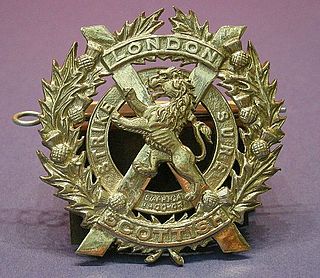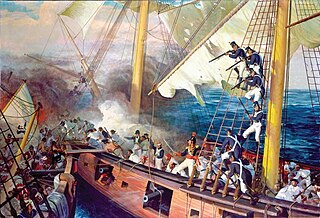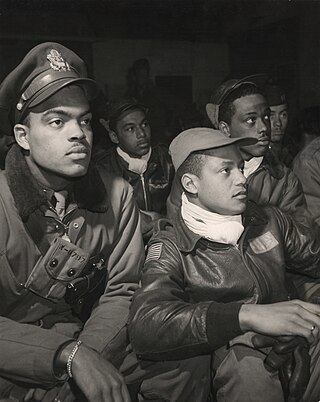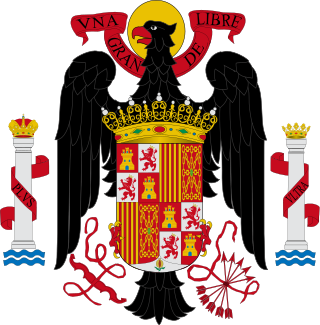
The Blue Division was a unit of volunteers from Francoist Spain operating from 1941 to 1944 within the German Army on the Eastern Front during World War II. It was officially designated the Spanish Volunteer Division by the Spanish Army and 250th Infantry Division by the Germans.
16th Division or 16th Infantry Division may refer to:

The Corps of Volunteer Troops was a Fascist Italian expeditionary force of military volunteers, which was sent to Spain to support the Nationalist forces under General Francisco Franco against the Spanish Republic during the Spanish Civil War, 1936–39.

The Somerset Light Infantry (Prince Albert's) was a light infantry regiment of the British Army, which served under various titles from 1685 to 1959. In 1959, the regiment was amalgamated with the Duke of Cornwall's Light Infantry to form the Somerset and Cornwall Light Infantry which was again amalgamated, in 1968, with the King's Own Yorkshire Light Infantry, the King's Shropshire Light Infantry and the Durham Light Infantry to form The Light Infantry. In 2007, however, The Light Infantry was amalgamated further with the Devonshire and Dorset Regiment, the Royal Gloucestershire, Berkshire and Wiltshire Regiment and the Royal Green Jackets to form The Rifles.

The Royal Warwickshire Regiment, previously titled the 6th Regiment of Foot, was a line infantry regiment of the British Army in continuous existence for 283 years. The regiment saw service in many conflicts and wars, including the Second Boer War and both the First and Second World Wars. On 1 May 1963, the regiment was re-titled, for the final time, as the Royal Warwickshire Fusiliers and became part of the Fusilier Brigade.

The London Scottish was a reserve infantry regiment then a company of the British Army. In its final incarnation it was A Company, the London Regiment until, on 1 May 2022, soldiers in the company transferred to foot guards regiments and the company became G (Messines) Company, Scots Guards, 1st Battalion London Guards.

The 69th Infantry Regiment is an infantry regiment of the United States Army. It is from New York City, part of the New York Army National Guard. It is known as the "Fighting Sixty-Ninth", a name said to have been given by Robert E. Lee during the Civil War. An Irish-American heritage is attributed to the regiment, which is also nicknamed the "Fighting Irish" – a tradition mentioned in Joyce Kilmer's poem "When the 69th Comes Back". Between 1917 and 1992 it was also designated the 165th Infantry Regiment. It is headquartered at the 69th Regiment Armory in Manhattan.

Marines, or naval infantry, are typically a military force trained to operate in littoral zones in support of naval operations. Historically, tasks undertaken by marines have included helping maintain discipline and order aboard the ship, the boarding of vessels during combat or capture of prize ships, and providing manpower for raiding ashore in support of the naval objectives. In most countries, the marines are an integral part of that state's navy.

The military history of African Americans spans from the arrival of the first enslaved Africans during the colonial history of the United States to the present day. African Americans have participated in every war fought by or within the United States.

During World War II, the Spanish State under Francisco Franco espoused neutrality as its official wartime policy. This neutrality wavered at times, and "strict neutrality" gave way to "non-belligerence" after the Fall of France in June 1940. Franco wrote to Adolf Hitler offering to join the war on 19 June 1940 in exchange for help building Spain's colonial empire. Later in the same year Franco met with Hitler in Hendaye to discuss Spain's possible accession to the Axis Powers. The meeting went nowhere, but Franco did help the Axis—whose members Italy and Germany had supported him during the Spanish Civil War (1936–1939)—in various ways.
The Irish military diaspora refers to the many people of either Irish birth or extraction who have served in overseas military forces, regardless of rank, duration of service, or success.

The Iron Brigade, also known as The Black Hats, Black Hat Brigade, Iron Brigade of the West, and originally King's Wisconsin Brigade was an infantry brigade in the Union Army of the Potomac during the American Civil War. Although it fought entirely in the Eastern Theater, it was composed of regiments from three Western states that are now within the region of the Midwest. Noted for its strong discipline, its unique uniform appearance and its tenacious fighting ability, the Iron Brigade suffered the highest percentage of casualties of any brigade in the war.

The 1st Rhode Island Infantry Regiment were two regiments of the United States Army, the first of which was raised in 1861 at the beginning of the American Civil War on a 90-day enlistment, the second during the Spanish–American War in 1898.
The military uniforms of the Union Army in the American Civil War were widely varied and, due to limitations on supply of wool and other materials, based on availability and cost of materials. The ideal uniform was prescribed as a dark blue coat with lighter pants, with a black hat. Officer's ranks were denoted with increasing levels of golden decoration. Specific jobs, companies, and units had markedly different styles at times, often following European customs such as that of the Zouaves. Officers uniforms tended to be highly customized and would stray from Army standard. Ironically, several main pieces of gear had been created by order of the U.S. War Secretary Jefferson Davis before the war; he later became Confederate President.

The Spanish Volunteer Medal formally known as the Commemorative Medal for Spanish Volunteers in the Struggle Against Bolshevism , commissioned 3 January 1944, was awarded by the Third Reich to recognize the men of the Blue Division who served at the Russian front during World War II. This force, attached to the Heer of the Wehrmacht, known as the 250th Infantry Division (span.), was in total composed of 47,000 men, sent by Francisco Franco to aid the Third Reich, as a way to pay back Adolf Hitler's help during the Spanish Civil War.

The 140th Brigade was an infantry brigade formation of the British Army's Territorial Army (TA) that had its origins in a South London Brigade of the former Volunteer Force. It served on the Western Front in the First World War and was recreated during the Second World War where it served only in the United Kingdom as a training formation.

The 135th Infantry Regiment is an infantry regiment in the Minnesota Army National Guard.













